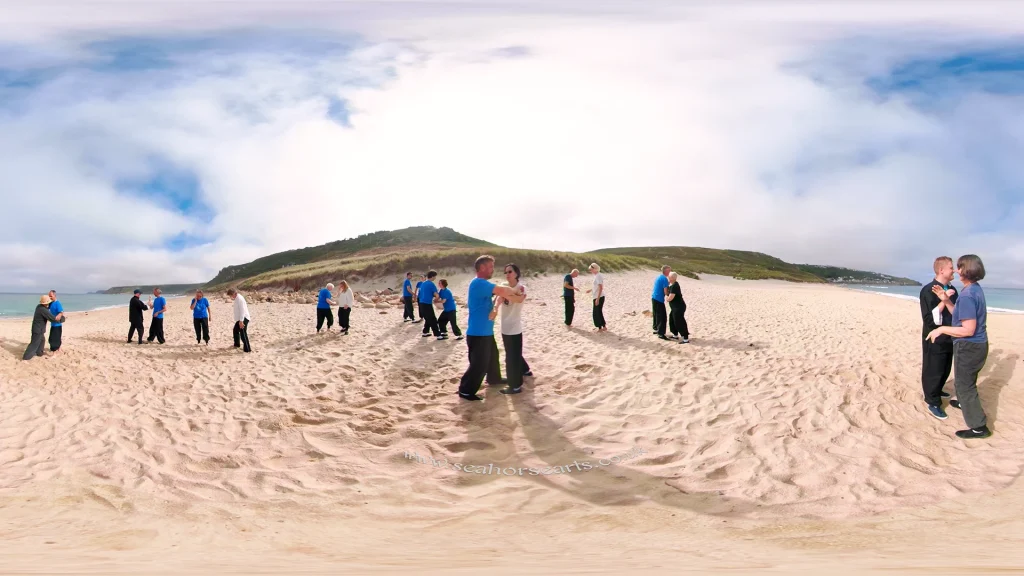
For many in the West, the image of Tai Chi often conjures up a group of elderly Chinese individuals practicing fluid movements in a park at dawn. This perception, while partly true, is deeply rooted in historical contexts and doesn’t give justice to the art’s universality and extensive benefits. So, is Tai Chi just for the elderly? Absolutely not.
The Historical Context
To clarify this misconception, we need to dive briefly into Chinese history. During the Cultural Revolution of 1966-1976, many traditional practices, including Tai Chi, were banned. This prohibition created a generational gap in Tai Chi’s transmission. Older individuals who had previously learned the art could retain their knowledge. In contrast, the younger generation missed out on this traditional wisdom, leading to the stereotype that Tai Chi was solely for the aged.
Historically, Tai Chi was an integral part of family traditions, passed down from grandparents to parents to children. This intergenerational transmission ensured the art’s longevity and universal practice.
Tai Chi for Students
My teacher Chee Soo was in his sixties when I met him but his classes were drawn from a diverse range of people of all social classes, all age groups and genders. I was a philosophy student at Warwick University and there were many students at his class in Leamington Spa and also trainee acupuncturists from the J.R.Worsley acupuncture college. For me, two key takeaways were learning how to manage stress and discovering the Taoist philosophy that underlies Tai Chi. I found this philosophy particularly intriguing, not just because of its practical and down-to-earth nature, but also because my university only offered English and American philosophy, lacking in Eastern perspectives. I also found the health benefits to be of use and the meditational aspect and the breadth and depth of the teaching really gave me pause for thought and helped me to look at life in a completely different way.
1. Mental Focus and Clarity: At the heart of Tai Chi lies the union of mind and body. According to Verywellmind, Tai Chi harmoniously integrates physical exercise with meditation. This union not only amplifies physical wellness but also enhances mental clarity, a critical component for academic brilliance.
2. Energy Conservation and Restoration: All too often, students find themselves drained from long study sessions. Tai Chi, especially when complemented with qigong, offers techniques to manage, conserve, and rejuvenate one’s energy, facilitating more extended, more efficient study periods.
3. Developing Defense Abilities: Beyond its serene appearance, Tai Chi is a martial art. As indicated by the Internet Public Library, students can harness Tai Chi to develop defensive skills, bolstering confidence and personal safety.
4. Holistic Physical Benefits: It’s no secret that physical activity boosts academic performance. But not all exercises are created equal. Tai Chi’s gentle movements, as highlighted by Harvard Health, positively impact muscle strength, flexibility, and balance.
5. Addressing Common Health Concerns: College life can sometimes exacerbate health issues due to stress, irregular schedules, and inadequate diets. Tai Chi provides relief from ailments like arthritis, rheumatism, back problems, and balance disorders, as noted by 123helpme.
6. Stress Management: Stress is arguably the most common ailment among students. Tai Chi, with its meditative foundation, provides a natural remedy for managing and mitigating academic stress.
Tai Chi for professionals
1. Bolstering Mental and Physical Stamina: Workplaces can be demanding. Drawing on LinkedIn’s insights, Tai Chi strengthens both the mind and body, equipping professionals with the resilience needed to handle corporate pressures.
2. Enhancing Team Dynamics: Teamwork makes the dream work. Beyond individual benefits, Tai Chi can be a team-building tool, fostering cooperation and harmony among colleagues, vital for a positive work environment.
3. Combatting Workplace Stress: Deadlines, meetings, and targets – the modern workplace is a hub of stressors. Incorporating Tai Chi into the daily routine can be a game-changer in managing and reducing job-related stress.
4. Augmenting Physical Fitness and Flexibility: Extended hours at a desk can take a toll on one’s physical health. Tai Chi, as Medical News Today suggests, enhances overall fitness and flexibility, preventing common workplace-related physical issues.
5. Holistic Empowerment: Rooted in Taoist philosophy, Tai Chi adopts a comprehensive approach to well-being. It isn’t just about physical health. It’s about mental empowerment, clarity, and a profound connection to one’s inner self.
Conclusion
It’s high time we challenge and change our perceptions of Tai Chi. It isn’t an art restricted to any age group, nationality, or fitness level. Its universal principles and benefits make it relevant for the bustling student community and the ever-evolving world of employment.
Embracing Tai Chi could be the key to unlocking a balanced, harmonious, and productive life. Its teachings offer practical solutions to contemporary challenges, making it a timeless art deserving of universal appreciation and practice. So, whether you’re grappling with academic pressures or workplace challenges, consider giving Tai Chi a whirl. It might just be the holistic solution you’ve been seeking.
Leave a Reply